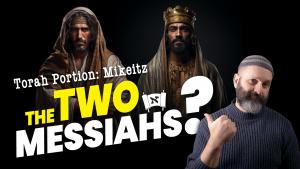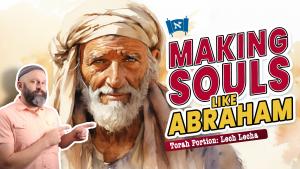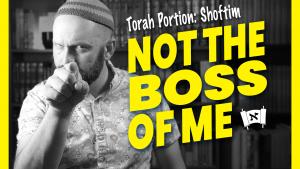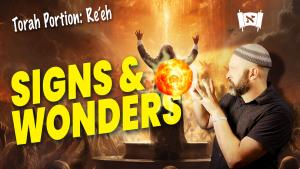Touching the Leper - Part 2
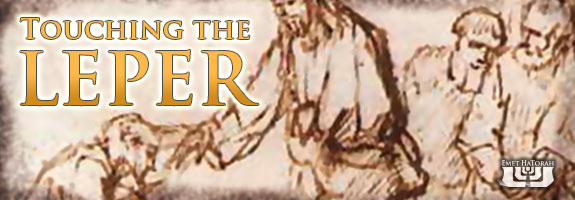
And a leper came to him, imploring him, and kneeling said to him, “If you will, you can make me clean.” Moved with pity, he stretched out his hand and touched him and said to him, “I will; be clean.” And immediately the leprosy left him, and he was made clean. And Jesus sternly charged him and sent him away at once, and said to him, “See that you say nothing to anyone, but go, show yourself to the priest and offer for your cleansing what Moses commanded, for a proof to them.” (Mark 1:40-44)
In my last post, I addressed biblical leprosy and its causes in order to give some background on this incident in which Yeshua touches the leper to make him whole. In this post I address the implications of his touch, as well as addressing some misconceptions about the event.
Yeshua's Encounter with the Leper
Now that we have a better understanding of the details of tzara'at, we must now return to our passage in which Yeshua encounters the metzora, a man who has contracted biblical leprosy. In the story, the man requests one thing of Yeshua. He asks, “If you will, you can make me clean” (v. 40). Notice his request. His request was not healing, but purity. This is an especially important aspect to the story in light of what we have learned from examining the passages in Leviticus pertaining to tzara'at. We know that the man must have had advanced stages of tzara'at, because in Luke's parallel account, he is described as one who was "full of leprosy" (Luke 5:12). However, we can safely assume he could not be entirely covered with the affliction, because of what we learned previously regarding Leviticus 13:12-13. If he were "completely" covered he would be considered tahor, ritually pure ("clean"). If he was already clean / ritually pure, then why would he have need of Yeshua's touch to make him clean / ritually pure? With this in mind, we must realize that this man was still a legitimate metzora and brought uncleanness / ritual impurity upon anyone touching him. Some teach that although Yeshua touched the metzora, he did not become unclean. However, if Yeshua could not contract ritual impurity, then he was not truly human. But Scripture says, "the Word became flesh and dwelt among us" (John 1:14). He was not merely human in appearance, but human in every regard. Being in an unclean state was not a new experience for Yeshua. He would have dealt with this numerous times in his life. Remember, being unclean is not the same as sinning. His identification with humanity through taking upon himself flesh and blood allowed for Yeshua to truly identify with the temptations and the sufferings of mankind. Mark tells us that Yeshua was "moved with pity," and therefore "stretched out his hand and touched him and said to him, ‘I will; be clean.’" According to a Talmudic interpretation of Isaiah 53:4, the Messiah takes upon himself leprosy so that he might bear our afflictions:
The Rabbis said: His name is ‘the leper scholar,’ as it is written, ‘Surely he hath borne our griefs, and carried our sorrows: yet we did esteem him a leper, smitten of God, and afflicted.’ (b.Sanhedrin 98b)
Yeshua used this understanding as evidence that he was indeed the long-awaited Messiah when questioned by the disciples of John the Immerser:
And Jesus answered them, "Go and tell John what you hear and see: the blind receive their sight and the lame walk, lepers are cleansed and the deaf hear, and the dead are raised up, and the poor have good news preached to them." (Matthew 11:4-5)
He became the Leper Messiah for our sake, bearing our griefs and carrying our sorrows by intentionally touching the lepers and taking upon himself their afflictions. No, he did not break out in white scabs. He did, however, become unclean / ritually impure for the sake of this one man. Rather than speaking a word of healing and remaining clean / ritually pure, his compassion and empathy guided his hand to reach out and touch the impurity of another. Yeshua not only understood this and demonstrated this, but taught his disciples to do likewise by telling them,
Heal the sick, raise the dead, cleanse lepers, cast out demons (Matthew 10:8)
Show Yourself to the Priest With the healing of the leper, Yeshua sends the man away with a mission:
"Go, show yourself to the priest and offer for your cleansing what Moses commanded, for a proof to them" (Mark 1:44).
In doing so, Yeshua was commanding the man to travel to Jerusalem (a two or three day journey from the Galilee) to be inspected by the priesthood in the Temple. Once he was seen and declared clean, he was to offer up "what Moses commanded" for the purification of a metzora (from Leviticus 14). This included:
- Two live clean birds for purification ceremony
- One male lamb for a guilt offering
- One female lamb for a sin offering
- One male lamb for a burnt offering
- Flour and oil for grain offerings
Upon reading Yeshua's instructions to this man, a few questions should enter our minds. First, if he is already clean, why does he need to show himself to the priesthood and undergo the purification rituals? Second, Christianity typically teaches that Yeshua came to do away with the Temple, the priesthood and the sacrificial system. Therefore, why would he give the man specific instructions to "offer for your cleansing what Moses commanded?" Last, by sending this man to the priesthood as "proof," what was Yeshua hoping to prove to them? Our first question involves an issue of obedience to Torah. Although the man has already been purified, he still needs to be declared clean by the administrating priesthood according to Leviticus 14:1-32. Without the declaration from the priesthood, the man would not be allowed admittance back into his community (or any Jewish community for that matter). Also, to refuse to do so would have been a direct violation of the Torah. In other words, he would have been sinning. By telling the man to show himself to the priesthood, Yeshua upheld the command of Torah which tells the proper procedure for declaring a metzora to be clean. Our next question involves the priesthood and the sacrificial system. By having the man show himself to the priesthood and offer the prescribed sacrifices in the Torah, Yeshua demonstrated the intended interpretation of his teaching in Matthew 5:17, in which he said, "Do not think that I have come to abolish the Law or the Prophets." By doing this he upheld both the commandments and the earthly function of the levitical system. He showed that his (forthcoming) atoning work was not in competition with the levitical priesthood and system, but that his work was greater than these and the very thing upon which they were based. His sacrificial death and resurrection were in place long before the creation of the heavens and the earth. In the apocalyptic book of Revelation the apostle John declared Yeshua to be "the Lamb slain from the foundation of the world" (Rev. 13:8). It is this pre-existing act of Yeshua on which the entire sacrificial system is based, reflects and points toward. Our last question involves evidence submitted to the priesthood. But to what did this evidence point? This is actually a connecting point to our two previous questions. By having the man submit to the commands, the authorities and the procedures given by the Almighty in the Torah, Yeshua remained a "lamb without blemish" in regard to all of the righteous requirements of his Father. If he had veered from any of these procedures — or had instructed the man whom he healed to do so (Matthew 5:19) — he would have immediately invalidated himself as the anticipated Messiah. He would have broken at least one, if not several, of the commandments and thus become a sinner himself. Therefore, the man would have presented evidence to the priesthood that was threefold in composition. The first part of the evidence would have been that he was indeed healed and could begin the rituals which would allow for him to be declared clean and thus re-enter his community. The second evidential component was that there was indeed a healer of lepers in Israel, which would have given rise to messianic expectation. The third component would have been that Yeshua was indeed qualified as one who could lead his people in as the righteous Messiah and not a lawless false prophet who had come to tempt the Israelites with signs and wonders (Deuteronomy 13:1-5).
In Summary
There is a lot going on "behind the scenes" in this incident that requires deeper investigation. This is the case in almost every teaching or encounter of Yeshua recorded in our Gospels. In order to know the fuller meaning and deeper implications we must put aside our assumptions and dig into the historical context of the passages we study. We also have to make sure that our interpretations do not only agree with our theology, but with the Bible as a whole. When there is a conflict between our theology and God's Word, the obvious winner is the Word. Yeshua did not come to set aside his Father's commandments. He did, however come to release the captives from the bondage of both sin and suffering. May we always remember his incredible work on our behalf.




